Day 1 - Start of trek
Today we begin our 12 day trek. We will walk about 150km from Dharamshala across two mountain ranges: the Dhauladhars, and the Pir Panjal to reach our destination in Keylong.
In the morning we meet the guide Manu, the cook Swaroop, and
the 5 porters: Sita Ram (carries food trunk), Ramesh (carries cooking
utensils), Vinod (carries our 2 rucksacks), Viru (carries tents), and Chopra
(carries everything else - but is sent back after first 4300m pass). We start
with enthusiasm to climb to the first camp at Triund. The track winds uphill on
an old shepherds path. This part of the trek is popular and we pass many
refreshment stalls. It is hot and sweaty and we don't envy the porters who
carry up to 30kg each for less than £8-9 pounds per day.
We reach Triund after 6 hours and the porters set up our
tent for us. The view is fantastic as the clouds soon clear to reveal the
mountains and our route up the glacier to Inderhara (Indrahar) pass. The
combination of the verticality of the mountain pass in front of us and the lack
of oxygen at our first camp at 2975m makes us feel a bit weak in the knees.
Day 2 - Up to the Lahesh (base) Camp
Wake refreshed in the morning. Climb up over big boulders and cross the bottom of the glacier to reach a dark cave formed by an enormous boulder resting on another large rock. The cave is fairly wide but barely 1m tall. It is used for sleeping by Gaddi shepherds during the summer as they begin their journey over the mountain passes to take their herds of goats and sheep to fresh grazing regions in Leh and Spiti many hundreds of kilometers away.
As the afternoon progresses the clouds clear again and Manu
points out our route above us. The glacial pass looks more manageable today
although I still wonder whether I am going to make it.
We have the luxury of a tent to sleep in tonight, although later on in the afternoon it begins to rain and water begins to seep into the bottom of our sleeping bags. The day gets worse as John dries his Thermarest sleeping mattress and manages to puncture it. The foot blister plasters fail to fix the leak. As the sun sets, the air becomes frosty and John is not looking forward to the 10 hard and cold nights ahead of him.
We discover at dusk
that a Canadian woman has slipped from the top of Inderhara pass and fallen
several hundred meters on the snow and rocks. A mountain rescue is underway and
Manu plays an important role by climbing up to the casualty in a
record-breaking 2 hours. After checking her condition Manu finds there appear
to be no internal injuries or spinal damage and he decides to move the casualty
down to the shelter of the cave. At this point the casualty on the pass has
endured stinging hail, high winds, and sub-zero temperatures for over 10 hours.
These conditions also make a helicopter rescue impossible, although we see
several attempts during at dusk. During the night Manu and the team winch the
lady down the glacier using only two lengths of rope and a sleeping bag. The
rescue continues until 3.30am in the morning, and we hear raised voices
throughout the night.
Day 3 - Lahesh (base) Camp - Extra Day
In the morning, we wake to hear a roaring noise and feel the tent almost rising off the ground. The Canadian woman, her husband, and three sons have been taken to the sanctuary of the cave during the night. It is 5.30am and an army helicopter has arrived to transport the casualty to safety. She hobbles in pain as she crosses the rocks and is slowly winched up on a small seat up towards the helicopter. The whole operation looks extremely dangerous and after speaking to Adrian, the lady's husband, we feel worried about our climb which will follow their route
30 minutes later another helicopter arrives at the scene.
However nobody knows the correct semaphore to let them know that the casualty
has already been airlifted. So two burly guys drop down with an emergency
stretcher and are informed that she's already been taken to hospital by the
army. One of the guys is an Australian called Roddy, who who owns the
helicopter and runs a heli-skiing operation.
It has been a long and tiring night for most of our team and we agree to spend an extra day resting and to attempt our mountain pass tomorrow. I feel quite relieved to feel the strains of mountain sickness pass as we spend the day enjoying the view down the glacier and up towards our mountain pass.
At dusk the sunshine disappears and rain arrives. A second
tent has been provided for us however we find that the ground is wet again. At
first, a night sleeping in the cave didn't seem very appealing as it is very
claustrophobic and full of sheep dung. However, now we happily retreat to sleep
in the cave with everyone else where it is dry.
Day 4 - Indrahar Pass (4300m)
I wake in the darkness and confinement of the cave at 4.30am.
In the night I dreamt
of about being woken for our fresh chapatti breakfast but now it is the
reality. Today we will cross the Indrahar Pass at 4300m. From this point
onwards we will see no more Westerners until we reach the end of the trek.
We start the walk by scrambling up huge granite boulders. It is hard work but it is still early and cool. Soon we stop and metal crampons are tightly strapped onto our boots. We feel disabled with these heavy weights and with the high altitude it is really hard work walking and breathing. Manu and Swaroop use their ice axes to hew small steps into the near vertical walls of snow and we slowly ascend. The sun rises quickly and soon we are captured by its intensity. It looks as though we are nearly at the top, but Manu informs us that we are only two thirds of the way up.
Soon we reach the point where the Canadian lady fell to. We
see tracks in the snow where she was lowered downwards and we find an abandoned
ice axe and pair of snow goggles. The thought of falling is really scary. We
wonder how our porters can carry such heavy loads and can wear shoes which have
no grips but most of our concentration is filled by watching our feet and with
careful treading.
Finally we reach the top and our breathlessness and
exhaustion disappear as we see the view. At this altitude the clouds
mysteriously appear and disappear and now we can see into the next glacial
valley. The glacier of virgin snow is spectacular and appears as a moonscape of
contours and craters. In the distance we also see the Pir Panjal range of the
Himalaya which we will soon reach.
We meet a Gaddi shepherd with around 500 goats and sheep.
He will make the same walk as us but he only wears a woolen
jacket, cheap trousers, and woolen socks covered with a mesh of rope. He
carries a blanket on his back and we are told that he will only eat chapattis
made with Corn flour plus drink goats milk until he reaches his destination
over 300km away.
Our descent is really exciting as we sit on our bums and slide down 1km of snow, several hundreds of meters at a time. This is certainly much easier than the ascent and it is really exhilarating speeding down the mountain. Several of the porters trousers are in tatters after the sliding.
We walk through pine forests growing around the glacier, past
outlets of underwater streams and up rocky cliffs. Eventually after a total of
18km from the cave we reach a grassy meadow surrounded by mountains which will
be our camp for the evening. As we relax and unwind, more Gaddi shepherd's and
their flocks pass us on their long journey to new pastures.
Day 5 - Kuarsi Village (2100m)
This morning we wake to see a beautiful view of the
mountains at sunrise. The peaks of snow are dazzling white against a blue sky
and more shepherd's seem to be already on the move
As we approach Kuarsi village we begin to see terraced fields full of wheat, barley and vegetables. As we get closer, we are pleasantly surprised to see black slate roofs and timber houses. Kuwarsi is a delightful village that seems to be lost in time. Around 300 people live in harmony in this community. It is 12 km from the nearest road head and there are no roads, shops, sewage or showers (much to Rachel's disappointment).
We are staying in the local temple. The building is
constructed of pine and in the central courtyard there is smaller building
which houses the Gods. Water emerges from a hollowed out wooden tree and many
people come and fill huge water brass urns which they balance on their head. It
is clean and very peaceful here and we have an open plan upper floor all to
ourselves.
After washing our clothes in the local stream outlet, we wander around the village. It seems as though most of the men are working in the fields, whilst the women harvest their crops for drying and storage at home. There are many children who each seem to be genuinely pleased to see us. They try to speak English and they all have beautiful smiles.
Someone shows us a newspaper article featuring yesterday's
air rescue on the front page.
The wooden houses are several stories high with cows accommodated
on the ground floor and the living quarters upstairs. Many of the houses have
huge wooden looms for weaving woolen rugs. The people seem to own nothing but
they are extremely friendly and invite us to drink chai masala (spiced tea made
with milk) on their balconies. We don't really understand one another’s'
conversation, but we all appreciate the company and the splendid views.
Day 6 - Bharmour
We are a little sad to leave Kuarsi as it is a really beautiful village. We exit via some tracks which soon open onto small paths which have been built onto the side of a cliff. The paths are very narrow and there are many people who don't seem to be bothered by the steep death-drop down into the river below. There are plans to widen this path to construct a road to the village, however we think seems to be highly unlikely. We pass a family who carry a small white lamb. Manu tells us that the lamb will be sacrificed in the Kuarsi temple later today and this makes us feel a little more pleased to be leaving.
We pass Hilling, another small village and after 3 hours reach a road.
In order to catch up on our lost day at the caves, we take
two local buses and eventually reach our destination for the night, Bharmour.
On first impressions Bharmour is a very dusty town. We stay in a small guest
house which has the luxury of a private squat toilet and no shower although the
owner obliges by providing a bucket of hot water for bathing.
In the evening we visit the main attraction of Bharmour
which are the Hindu Chaurasi temples. There are 84 temples, some dating back to
the 8th Century. As the moon rises each of the temples are lit up by a visiting
priest to expose elephant, monkey, and other half animal Gods. Many of the
temples have intricate wood carvings and cool stone floors. There are many
Indian tourists in this region, but we are still surprised to see no
westerners.
For dinner tonight, we eat our first meat for six days -
fresh goat stew with more chapattis!
Day 7 - Bharmour to Dharbala Camp
In the morning we try to find a bus to take us further up
the road to Hadsar to avoid the walk along the road busy with jeeps, buses, and
cars.
The bus driver informs us that he doesn't know how far the bus will be going due to road.
Construction work, so we hire a jeep. Into one jeep we fit
the entire crew of 2 clients (us), 4 porters, 1 cook, and 1 guide, plus driver,
drivers assistant, and a small boy. Most of our luggage goes on the roof. The
heavily laden jeep sets off with gusto - Rachel and I sit in the front, and we
move between the emotions of fear and excitement as we drive along the dusty
road, narrowly missing other road users. The jeep is pretty basic but has a
stereo that blares out Indian music plus a very loud horn that can play several
different tunes and is used almost continually.
After a while the road becomes rough and impassable, so we
get off and walk. Many labourers are working on the road. It’s an almost
unbelievably tough life for them. I learn from one that they get paid about 1
pound per day- working 6 days a week they get paid for Sunday too. They live in
Shanty towns where the houses consist of a wooden frame with a tarpaulin thrown
over.
It’s quite hot today and very dusty on this side of the Dhauladhar
Mountains and the walk is not that pleasant walking along a road construction
site
We reach our camp after 3 hours or so - it’s beside a
Forestry office and a shanty town full of Nepali immigrant construction
workers. We take a look inside one of the huts and meet the warden for the
forestry commission hut.
Day 8 - Kugti Village
Kugti village is reached after a fairly leisurely 3hr hike. It is another largely unspoilt Gaddi tribal village. Its much more squeezed together than Kuarsi. We are staying in the home of a local family. Downstairs there is a courtyard and accommodation for the cows, and there are two floors above that. The building is constructed from stone and wood, and has lovely balconies to sit on and enjoy the view. Our twin bedded room has been abandoned by its occupants, two brothers, in the 2 minutes since we arrived and walked up the stairs. It looks clean and tidy, and it's nice to have beds to sleep in.
In the afternoon we take a walk round the village and chat to various people including a pharmacist who gets paid 200 pounds a month (equivalent of a doctor he informs us)
We see women carrying stacks of barley freshly harvested
from the tightly terraced fields on the hillside next the village. Children
greet us with 'photo, photo' not hello.
I am fascinated by the water powered flour mills down beside
the river. We find one that is running. Its great to see 1000 year old
technology in operation. Inside there is a man making sure that the grain runs
into the centre of the top millstone at the correct rate. I always assumed
these would run fast but the flow of grains is no more than a trickle.
Everything, including the man is covered in flour dust. Outside water gushes
down a lade underneath the building and exits in a spray after impinging on the
turbine blades, which are attached by a long wooden shaft to the upper stone.
Day 9 - Kelang Temple
Another 3-4hr hike today. This is because we decide to stop earlier than planned because our intended camp at Duggi is covered in sheep poo due to the mass movement of sheep through the valley and over Kugti Pass.
On our way we pass a large group of people at a small Hindu temple by the side of the road
We are just in time to see them sacrificing a small lamb by
cutting its head off. Manu informs us the blood is sprinkled on the temple
alter as a way of saying thank you to the gods when a wish or prayer is
granted. Later they will also eat the meat.
We reach Kelang temple at 3000m and it's quite exposed.
Around the temple there are lots of dogs that survive on the scraps given by
the temple caretakers and passing shepherds and pilgrims.
There are a number of buildings and in one of them our team
sets up the kitchen and sleeping area. They pitch a tent for us outside on a
flat spot infront of the temple. I don't really like this temple as much as
some of the others we've seen as it's really untidy and smells of dirty dogs
and dead goats.
After lunch we wander up the hill to look at the sister
temple. This one is completely open and commands amazing views of the mountains
all around.
In the evening it starts raining and we think we might have
to abandon the tent for one of the temple buildings. Fortunately the rain stops
at nightfall and we can use the tent
When taking a pee in the evening I see loads of glow-worms
shining their tails at me warning me not to wee on them.
Day 10 - Kugti Pass Base Camp (Lahesh)
This is one tough walking day. After 1.5hrs we reach where
we should have camped the night before at Duggi. Our suspicions are confirmed
that it is indeed covered in sheep poo. However the views on to the mountains
are some of the most spectacular we've seen so far. We press on towards the
camp at 4000m. The vegetation starts to change and we pass over high altitude
meadows covered in all kinds of wild flowers. It's starting to feel difficult
to walk at anything more than a snails pace.
We see many shepherds moving their flocks up the valley towards the pass. They shout and whistle at the sheep using a variety of tones that you wouldn't necessarily think were human. Our porters enjoy imitating them as best they can. The shepherds dogs appear completely useless - as they play no role in making the sheep and goats move; they tag along quietly behind while the shepherds do all the work. The flocks are moved by one shepherd leading them and several shepherds rounding up the stragglers at the back.
We reach Lahesh at about 3pm and get a cup of tea and
biscuits to build the blood sugar level. It's a superb camp site - high in the
mountains on a flat green meadow covered in anemonies with a glacial stream
forming a ring of bright water around our tent.
In the evening we agree to a 3.30am start next day to ensure
we get over the pass early, ideally infront of the sheep
Day 11 - Kugti Pass
At 3.30am we wake. It’s a full moon and a completely clear sky, so everything surrounding us appears in stunning black and white. The stream is silver and the snow on the mountains is bright white. After a quick breakfast we start walking up towards the pass. We find the going tough as we've never walked at this altitude before.
After an hour or two we put on crampons to help walk in the snow. They add considerable weight to a boot so it feels like I have lead feet. We find that despite our early rise, the shepherds got up earlier than us and are ahead of us in moving their flocks over the pass.
Daylight breaks, but there's no sun till quite late because
it's concealed until about 10am when it can finally filter into the steep sided
valley. It's just as well because the hot sun can really slow you down when
hiking at this altitude.
The last 200m altitude take us about an hour and half as we
have a very steep 60degree scramble up snow and ice to the top of the pass. As
always we are amazed how the shepherds do it in normal shoes or socks+string.
The sheep find it easy too apart from one little black lamb that we find
abandoned about 100m from the summit. It's too knackered to go on and I can
sympathise with it.
Finally after 5hrs we reach the top and the views are the
best of the entire trek. We can see mount Kailash to the south and the expanse
of the Himalaya to the North. We take a few photos at the top and watch a large
eagle soaring nearby. The flock of goats and sheep just ahead of us moves down
the other side of the pass.
The height here is 5040m - so about 16500ft - the highest we've ever been. The air is thin but we both feel fine.
We start descending and it’s pretty steep downhill. Rachel
slips and starts sliding downhill. She bumps into Vinod the porter and sends
him sliding downhill too. They both start accelerating, but Vinod manages to
bring it under control and stop. Unfortunately Rachel doesn't and is moving
very fast downhill. She starts tumbling over like a someone in a bad ski crash,
and everyone looks on in horror. Finally she stops in some soft snow 200m down
and sits up. From where everyone else is we can see that she's not seriously
injured as she moved all her legs and arms. I slide down to check that she is
OK. She looks shaken and has a cut in her leg from the crampon coming off, but
is otherwise OK. She takes it in good spirits and after having a 5min rest and
reattaching the crampon we can go on. No more sliding though. I feel relieved
that she is OK.
The walk downhill to the camp takes a further 5hrs and is
absolutely knackering. The views are good though - if somewhat tempered by
Rachel's fall.
Finally we reach our campsite at 3600m. We discuss whether
this could possibly be the perfect mountain campsite. It has a small glacial
stream flowing over a field of wildflowers. All around us are the most
magnificent Himalayan peaks and the sky is completely blue. We pitch our tent
beside the stream and enjoy a cup of tea. A tiring but memorable day.
Day 12- To Keylong
The last day of trekking. We have about 4hrs of downhill walking to Rapey village and then catch the bus to Keylong.
Approaching Rapey village we start to see signs of human habitation - aquifers to channel water into terraces where willow trees are grown for basket making. Other crops such as beans and potatoes are being grown as cash crops. We see stacks of cowpats laid out in neat rows to dry in the sun for use as fuel. Apparently cow dung burns much hotter and cleaner than wood and is an ideal fuel in these areas. At Rapey we wait a couple of hours for the bus. Surprisingly it arrives on schedule but it really is sardines on board. We endure the crush for 1.5hrs to reach Keylong.
We check into our hotel which has a TV, double bed and
bathroom. We get an opportunity to use a mirror for the first time in 12 days
and I reckon I've lost weight - not too much though. Rachel thinks that her
hair has grown. We ask the team to a meal in the restaurant and we all have a
beer. A real treat.
Manu informs us that the road to Manali over Rohtang pass has
only been open for 20 days (since being snowed up for winter) and is in a very
poor state. He recommends a 5am start to avoid any congestion on the road as
overtaking is very difficult and huge queues can build up.
Day 13 - Rohtang Pass and Manali
The team hires a jeep and we load all our stuff on board. The first part of the drive up to Rohtang Pass at 3600m is pretty uneventful, although the drive is stunning. On the sides of the road the snow is sometimes over 5m high - almost like driving through a tunnel of ice.
Then we see huge queues of trucks. Soon the reason becomes clear. There a blockage on the road that means only cars can get through. Fortunately the jeep can squeeze through. On the other side of the blockage there are miles and miles of trucks and cars queuing to get past. We have to go past them very carefully often with the jeep's tyre only just on the edge of a huge scary drop. It all starts to get nerve-wracking but we push on.
This road is the main route to Leh in Ladakh region. Pretty
much everything going into and out of Ladakh goes via this route. In addition
its an Indian holiday and lots of people from the plains like to drive up to
the pass to see snow and experience what cold is. We keep passing the queues in
the opposite direction and eventually encounter a block we can't pass. Our
driver goes off road. At several points we jump out and lay down stones to
allow the jeep to proceed. We make it back to the road and everyone is
delighted.
The drive down the other side of the pass is a nightmare as
we encounter hundreds of cars on blind corners being driven by people
inexperienced on the mountain roads, but driving like crazy. If only they knew
that they would not be making it to the pass they might slow down...
Finally we reach Manali, tip the team, and check into the
Mayflower Hotel. Now this really defined luxury with huge wooden balconied
rooms, satellite TV, room service, open fireplaces, hot showers, and of course
a Toilet. Our team had planned to climb in Mt. Friendship Peak when we will reach Manali, but we all were very tired and we canceled this plan.
Guest Post by: Rachel John




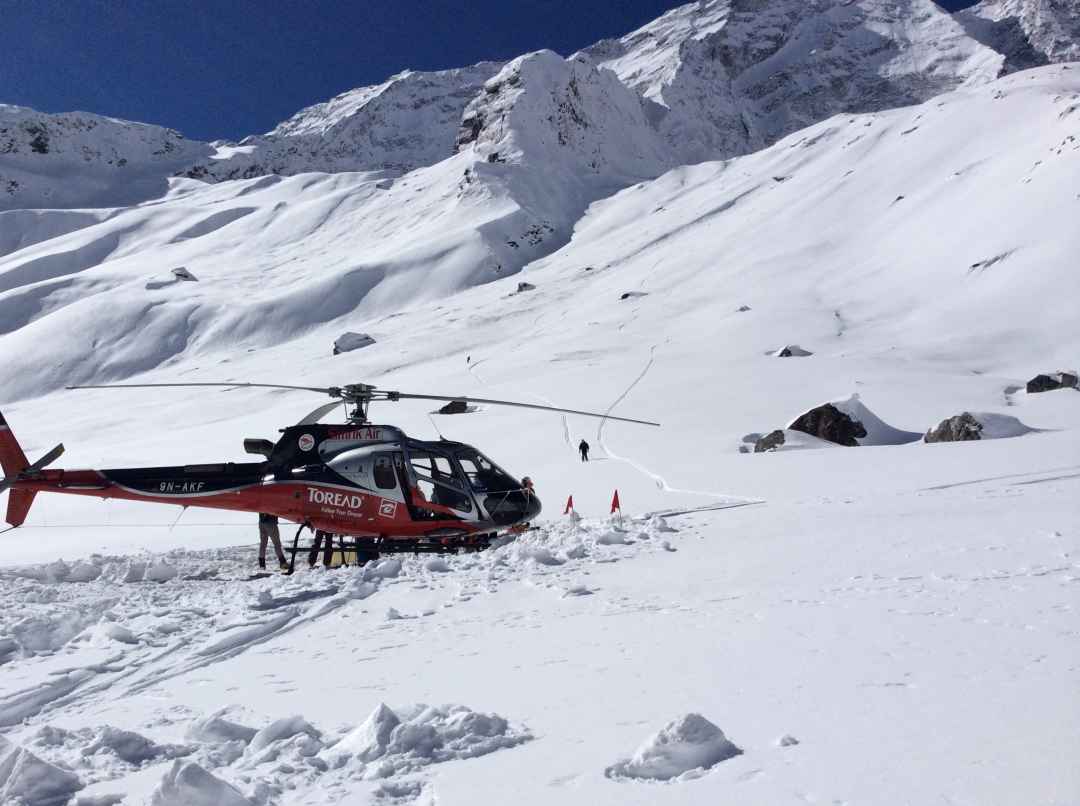
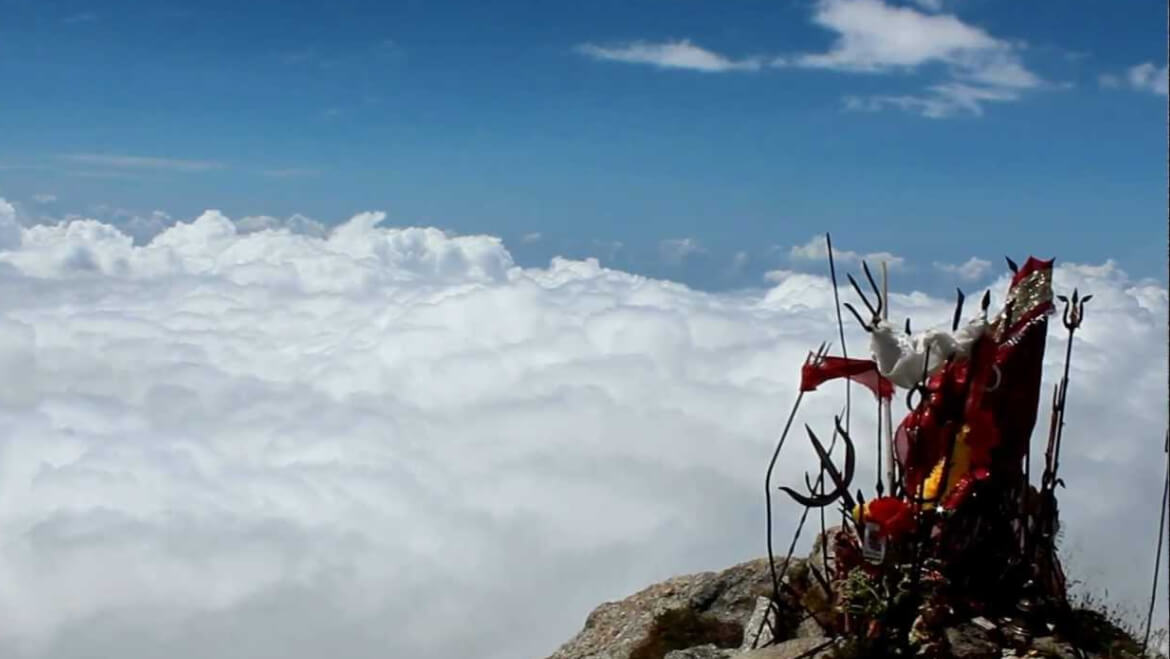
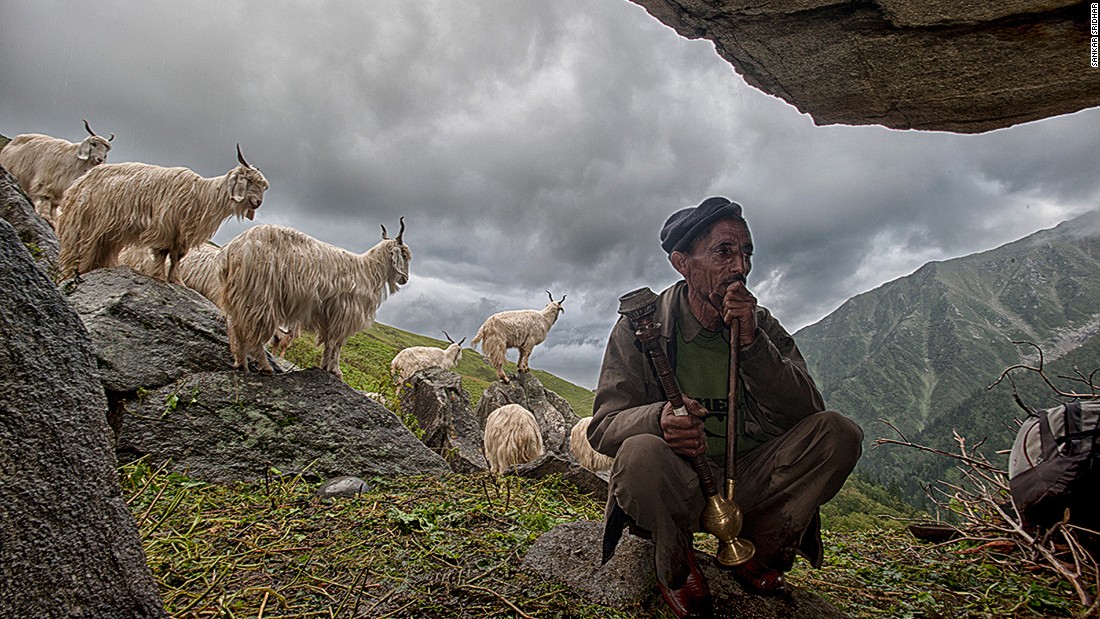


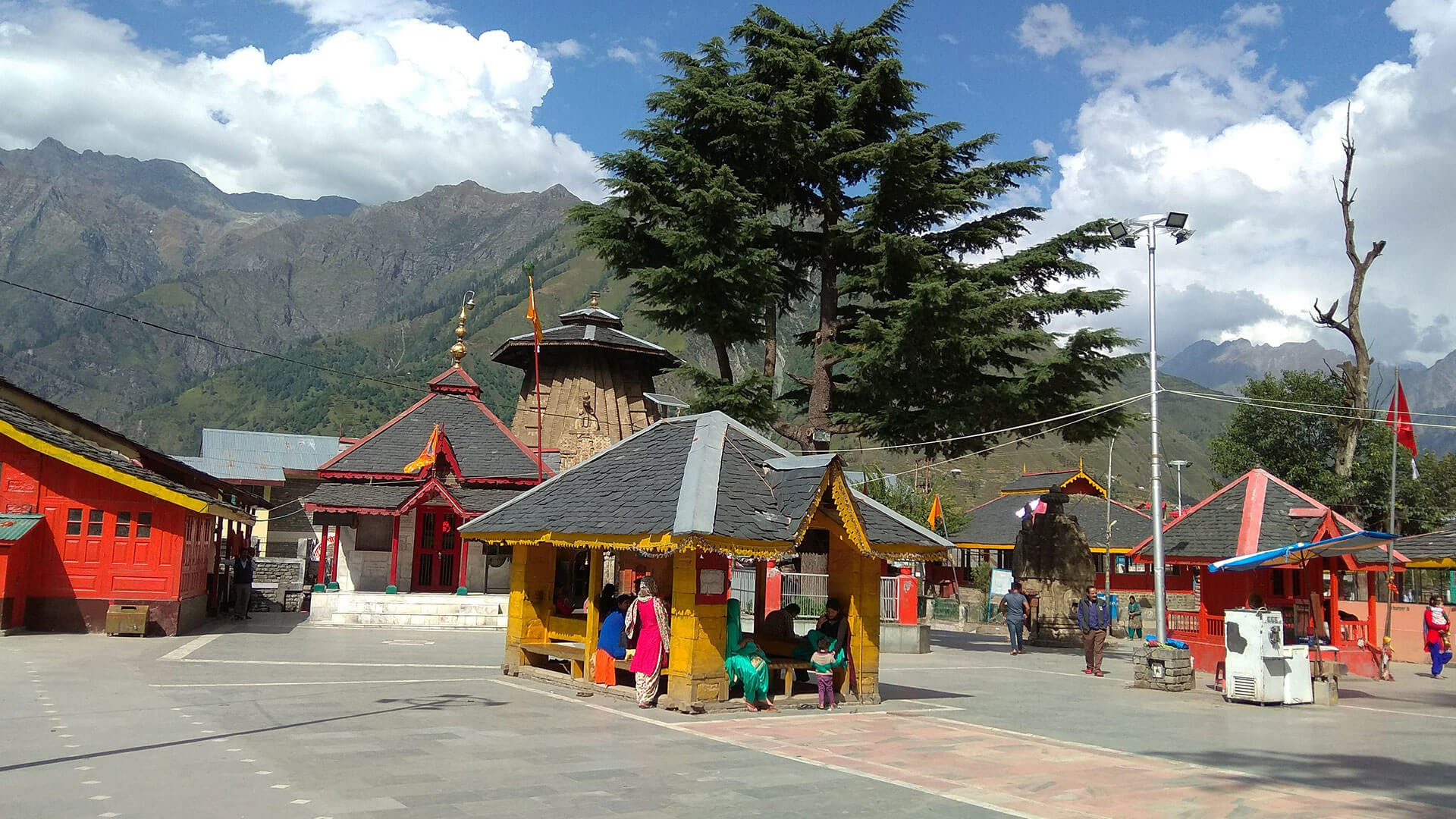



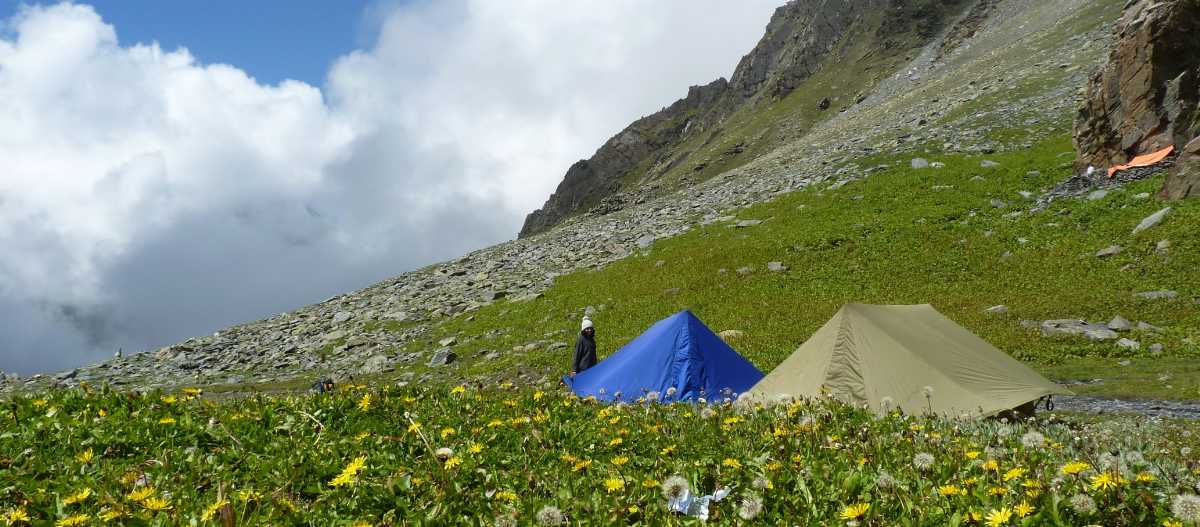


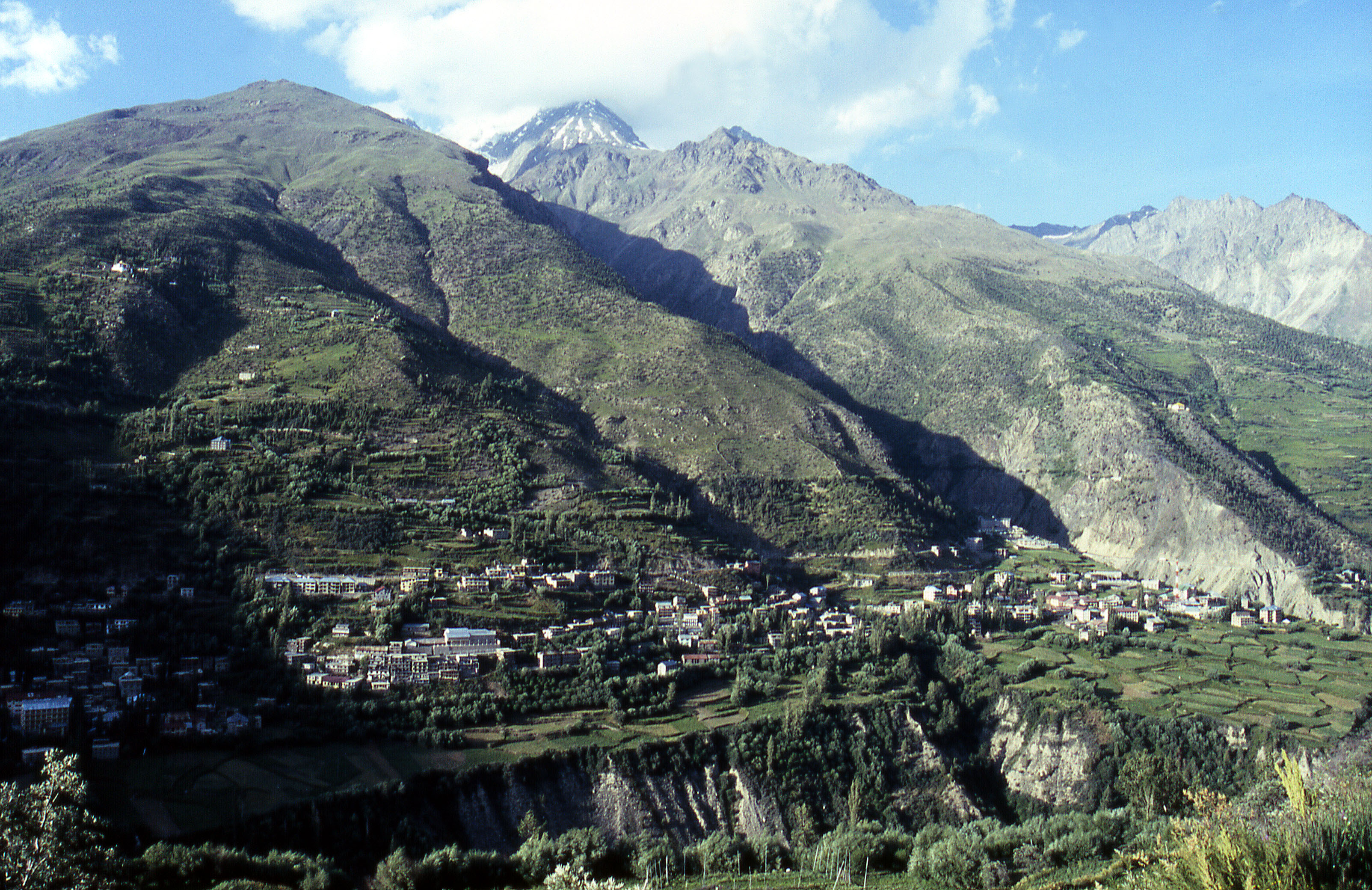
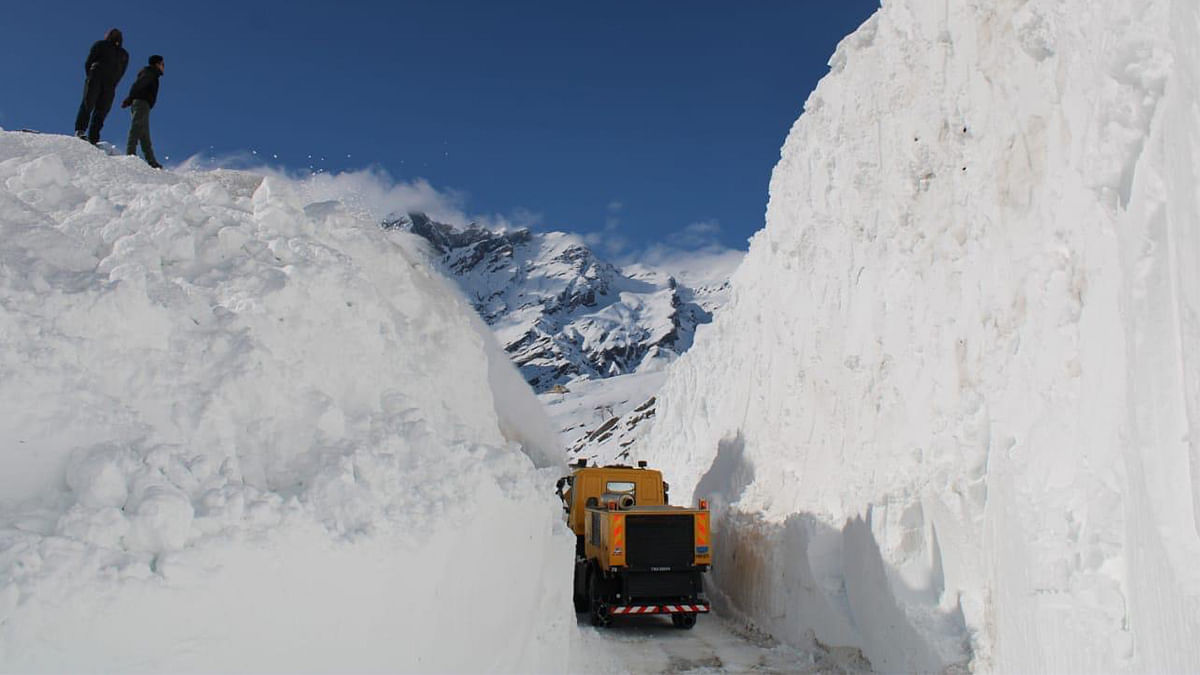


No comments:
Post a Comment